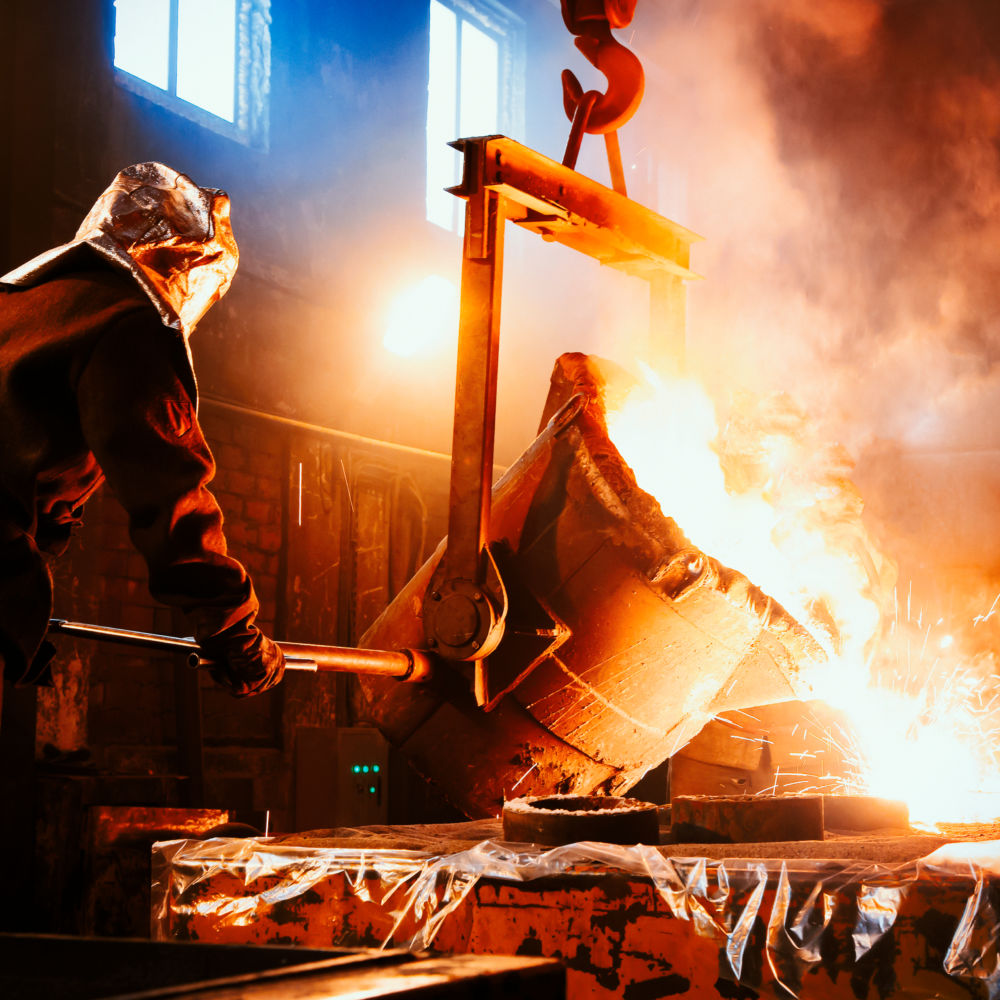Applications to Casting
Calculate the following as a function of material chemistry and temperature:
Application Examples
Variation in Solidus Temperature over Alloy Composition Specification
The melting temperature of an alloy can be sensitive to its specific chemistry. Handbooks and material data sheets typically only specify a nominal value for the liquidus and solidus temperatures. Even within a material chemistry specification, there can be quite a large range of transformation temperatures. Thermo-Calc can be used to explore the entire chemistry specification range and its effect on solidification behavior.
This plot shows the variation in solidus temperature calculated for 1000 compositions that fall within the alloy 718 specification range. This can be used to understand potential long tail effects in different specification ranges.

Predicting Elemental Segregation Profiles across a Dendrite
During most solidification processes, elements will segregate between the liquid and solid, creating compositional gradients on both the macro and micro scales, such as across dendrites. The non-equilibrium nature of many solidification processes can also lead to peritectic or eutectic phase formation, which is not predicted under equilibrium conditions.
This figure shows the predicted elemental segregation profile for an aluminum alloy AA6005 just after solidification is complete, and before any homogenization treatment has been performed. Understanding the extent of segregation is important when determining an appropriate heat treatment.

Calculating Latent Heat under Non-equilibrium Solidification
Many casting and solidification finite element codes require material property data, such as latent heat, as inputs. Typically, these values are obtained from a handbook or by physically testing the material. Handbook data can be limiting as it typically does not account for heat to heat variations, temperature, and meta-stability, and simply may not exist for every alloy or novel chemistry. With Thermo-Calc, properties such as density, specific heat, and enthalpy can be calculated as a function of composition and temperature, and used to improve finite element modeling. These values can also be calculated under equilibrium (slow cooling) and non-equilibrium (rapid cooling) conditions.
This figure shows the calculated latent heat as a function of temperature during non-equilibrium solidification for a specific heat of alloy 316L. Some handbook values—which are for equilibrium and for an unknown chemistry—are shown for reference.

Learn more about Applications to Casting and Solidification
Modelling Microstructure in Casting of Steel via CALPHAD-Based ICME Approach
Thermo-Calc Modelling of as-cast Features and Its Influence on Final Mechanical Properties
Solidification Modelling With CALPHAD: Process Applications of Equilibrium and Non-equilibrium Models and When to Use Them
Improvement of the high-pressure die casting alloy Al-5.7Mg-2.6Si-0.7Mn with Zn addition
Continuous Casting of High Carbon Steel: How Does Hard Cooling Influence Solidification, Micro – and Macro Segregation?





